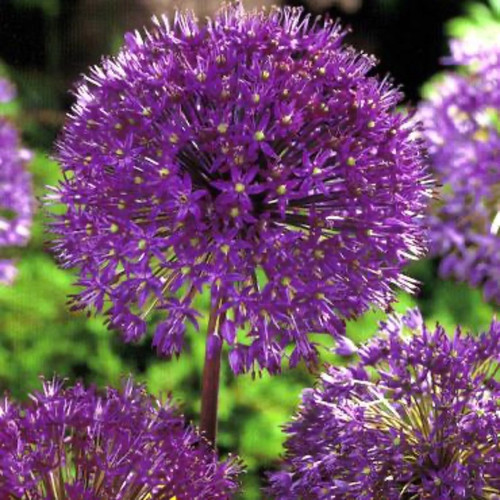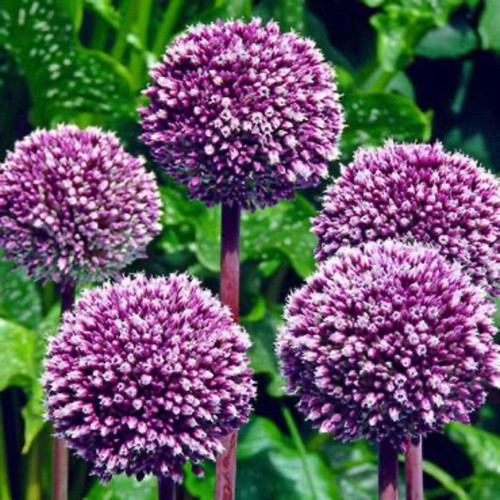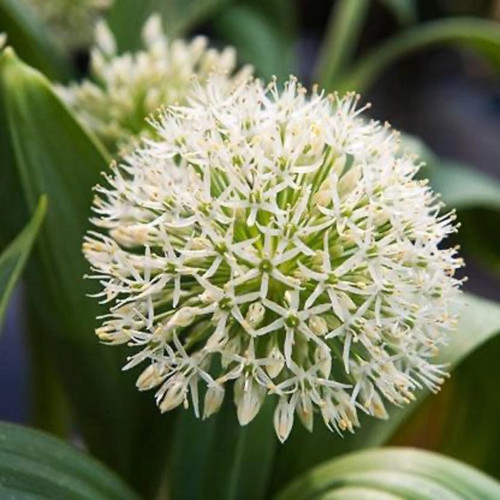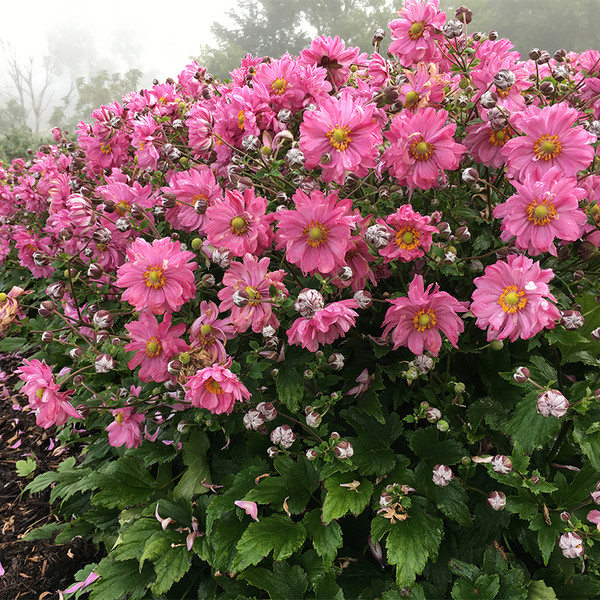
Allium
Uses:
- Striking Vertical Blooms
- Container Gardens
- Cut Flowers
Features:
- Long Blooming
- Attracts Pollinators
- Deer/Rodent Resistant
Sunlight:
- Partial Sun to Full Sun
- At Least 5 Hours of Direct Sunlight
Growing Zones:
- 4-8
- What is My Zone?
These hardy plants thrive in sunny locations with well-drained soil, making them ideal for borders, rock gardens, or as eye-catching accents in perennial beds. Allium enhances garden aesthetics by providing vertical interest, attracting pollinators, and offering a long-lasting display of unique, globe-shaped blooms.
About Allium

Onion, Garlic, Fireworks Flower
Northern Hemisphere, including parts of Europe, Asia, and North America
Perennials
Deciduous
3–9
Purple, pink, white, yellow, and blue
Late spring to early summer
Upright, clumping, and dense
Bees, butterflies, and other pollinators
Drought
Pests like rodents and deer due to its onion-like scent
How To Use Allium In The Garden
Alliums, also called ornamental onions, are known for their round flower heads made up of many tiny blooms. These blooms, often in shades of purple, pink, white, or yellow, emerge atop tall, slender stems, creating a striking visual in gardens. The plants' foliage is typically narrow and grass-like, which recedes as the flowers develop, allowing the blooms to take center stage.
Tall varieties, such as Allium giganteum, act as dramatic focal points, drawing the eye and adding architectural interest. Smaller species can be interspersed among perennials to provide continuity and rhythm within planting schemes. Additionally, alliums are effective in deterring pests like deer and rodents due to their natural compounds and can be planted as a protective barrier around vulnerable plants.
Types of Allium
| Type | Scientific Name | Flower | Bloom Time | Zones | Uses | Features |
|---|---|---|---|---|---|---|
| Mountain Garlic | Allium lusitanicum | Globes of pale-pink to pink-purple | Jul – Aug | 5–9 | Rock & cottage borders, naturalizing | Showy blooms; attracts butterflies; fragrant leaves; deer / rabbit / drought tolerant |
| Garlic Chives | Allium tuberosum | Loose umbels of creamy-white, fragrant flowers | Aug – Sep | 3–9 | Herb & vegetable beds, edging, naturalizing | Edible leaves & flowers; pollinator magnet; deer & drought tolerant (can spread) |
| Nodding Onion | Allium cernuum | Pink, nodding bells on bent scapes | Jun – Aug | 4–8 | Rock gardens, prairie & woodland edges | Pollinator friendly; deer, drought & rocky-soil tolerant |
| Chives | Allium schoenoprasum | Round heads of lavender-purple flowers | Apr – May (re-blooms) | 4–8 (to 3) | Culinary herb, edging, pots, rock gardens | Edible leaves & blooms; easy; deer & drought tolerant |
| Turkistan Onion | Allium karataviense | 3–6" spheres of soft pink stars, light purple | May – Jun | 4–8 | Rock/border fronts, containers, cut & dried flowers | Dramatic blooms on short stems; deer & drought tolerant |
| Star of Persia | Allium cristophii | Huge (8–12") metallic lavender starbursts | May – Jun | 4–8 | Beds, cottage borders, meadows, dried arrangements | Very large show heads; butterflies; deer & drought tolerant |
| Onion / Shallot | Allium cepa | Greenish-white umbels (infrequent) | June – July | 5–10 | Vegetable gardens, culinary harvest | Edible bulbs & greens; deer & rabbit resistant; tolerates dry soils |
| Bunching (Welsh) Onion | Allium fistulosum | 2–3' umbels of yellow-white flowers | May (can repeat) | 6–9 (annual) | Year-round scallions, herb beds, Asian cuisine | Cold-hardy, easy division; deer resistant; rarely bulbs up |
Allium Care
Plant allium bulbs in the fall, selecting a location with full sun and well-draining soil. Plant bulbs at a depth twice their height. Water thoroughly after planting and provide additional water during extended dry periods. Overwatering can lead to bulb rot, so allow the soil to dry between waterings. Fertilizing is generally unnecessary, but a top-dressing of bone meal or organic compost in early spring can be beneficial.
After flowering, deadhead spent blooms to prevent seed formation and limit spreading. Leave the foliage intact until it naturally yellows and dies back, enabling the bulb to store nutrients for the next growing season. In colder climates, apply a layer of mulch to protect bulbs over winter. For container-grown alliums, ensure pots have adequate drainage and are moved to a sheltered area during winter to prevent waterlogging and freezing.
Learn More About Allium Care

Allium Companion Plants
Alliums need a sunny exposure, sharply drained soil, and only sparing irrigation, so their companions must share that appetite for light and quick-drying ground. Evergreen euonymus supplies year-round structure without shading the bulbs, spirea matches the drought-tolerant soil profile and carries soft clusters into early summer, and tall rose of sharon rises later to draw pollinators upward just as the allium seed heads cure. Windflowers (Anemone hupehensis) then spread a low, moisture-conserving mat that masks fading foliage and returns fresh color when the bulbs lie dormant.
























